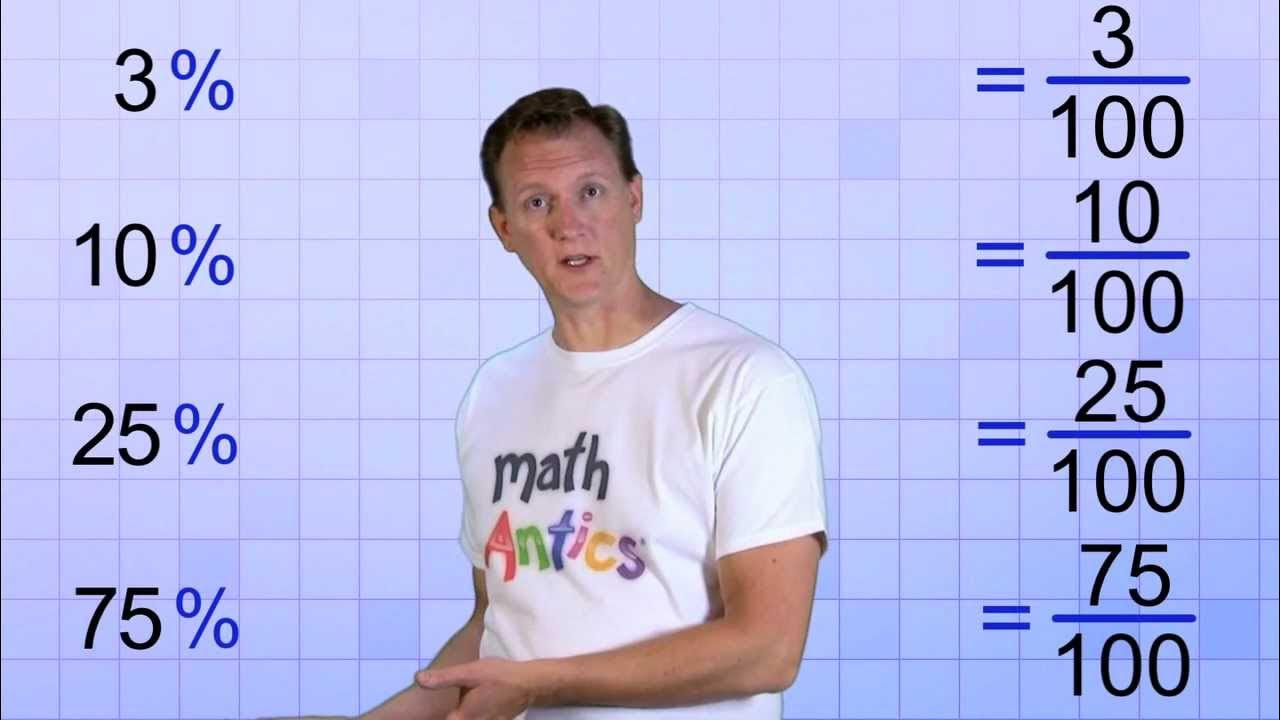Math Antics - Ratios And Rates
TLDRThis Math Antics lesson delves into the concept of ratios, explaining them as a 'relationship between two numbers by division', distinct from fractions which represent parts of a whole. The script clarifies that while mathematically similar, ratios and fractions serve different purposes in real-world applications. Ratios are used to compare quantities of different things, such as sandwiches to people on a picnic or apples to oranges at a fruit stand. The lesson also introduces rates, a type of ratio involving time, and demonstrates how to convert rates into unit rates for easy comparison. The video concludes with practical examples, highlighting the usefulness of ratios and unit rates in everyday situations.
Takeaways
- 📚 A ratio is a comparison of two numbers by division, representing a relationship between them.
- 🔄 Ratios and fractions are mathematically the same, differing only in their application and interpretation.
- 🍞 Fractions are used to represent parts of a whole, like eating half a sandwich (1/2).
- 🥪 Ratios are used to compare different things, like the ratio of sandwiches to people on a picnic (1:2).
- 📐 Ratios can be written in different forms, including the standard division form and using a colon (:).
- 🍏 Ratios are used in real-world situations to compare quantities, like the ratio of apples to oranges (5:3).
- 🍰 In baking, ratios can represent ingredient proportions, such as flour to sugar (2:1).
- 📺 The aspect ratio of a screen, like 16:9, compares its width to height.
- 🚗 Speed is expressed as a rate, which is a ratio involving time, such as 40 miles per hour.
- 🕒 Rates are often simplified to unit rates, with a denominator of 1, to facilitate easy comparison, like converting 120 miles per 3 hours to 40 miles per hour.
- 📈 Unit rates make it straightforward to compare different quantities or speeds, as demonstrated with the comparison of two cars' speeds.
Q & A
What is a ratio according to the script?
-A ratio is a 'comparison of two numbers by division' and can also be thought of as a 'relationship between two numbers by division'.
How are ratios and fractions similar?
-Ratios and fractions are mathematically the same thing. The difference lies in how they are used to describe things in the real world.
What is the difference between using a fraction and a ratio in real-world scenarios?
-A fraction is treated as a single number representing a part of something, while a ratio refers to the relationship or comparison between two different things.
Can you give an example of how a ratio is used differently from a fraction?
-In the context of a picnic, a ratio of sandwiches to people being 1 to 2 means there is 1 sandwich for every 2 people, showing a relationship between two different things, unlike a fraction which would represent a part of a single thing.
What symbol is sometimes used to represent a ratio?
-A colon (:) is sometimes used to represent a ratio, such as '3 to 2' which means '3:2'.
How can ratios be used to compare different quantities like apples to oranges?
-Ratios can be used to compare different quantities by showing the relationship between them, such as a fruit stand selling 5 apples for every 3 oranges, which would be a ratio of 5 to 3.
What is the difference between a ratio and a rate?
-A rate is a type of ratio that usually involves a period of time. It shows a relationship between a quantity and time, such as speed or cost per unit of time.
Why are unit rates useful when comparing different rates?
-Unit rates are useful for easy comparison because they standardize the bottom number of the rate to 1, allowing for a direct comparison of the quantities involved.
How can you convert a rate into a unit rate?
-To convert a rate into a unit rate, divide the top number by the bottom number. The result becomes the new top number, and the bottom number is 1.
What is the purpose of using unit rates when comparing rates with different bottom numbers?
-Using unit rates allows for a straightforward comparison by standardizing the rates to a common unit of time, making it easier to determine which rate is greater.
Can you provide an example of how to compare two car speeds using unit rates?
-Sure. If Car A travels at a rate of 120 miles per 3 hours and Car B at 150 miles per 5 hours, you convert these to unit rates by dividing the miles by the hours. Car A's unit rate is 40 miles per hour (120/3), and Car B's is 30 miles per hour (150/5), showing Car A is faster.
Outlines
📚 Understanding Ratios and Their Relationship to Fractions
This paragraph introduces the concept of ratios as a 'relationship between two numbers by division,' contrasting it with the traditional comparison of numbers. It clarifies that ratios are not just about comparing magnitude but about understanding how two quantities relate to each other. The script uses the fraction 1/2 as an example to illustrate the point, explaining how it can represent a part of a sandwich but also the relationship between the number of sandwiches and people on a picnic. The paragraph emphasizes the difference between fractions, which represent parts of a whole, and ratios, which compare two different entities, such as sandwiches to people. It also mentions alternative ways to represent ratios, such as using the colon symbol, and provides real-world examples of ratios in various contexts, including recipes, screen aspect ratios, and fruit stand offerings.
🚗 Exploring Rates as a Special Type of Ratio
The second paragraph delves into rates, which are a specific type of ratio involving a measure of time. It challenges the notion that ratios involve only two numbers by explaining that any single number can be expressed as a fraction with '1' as the denominator, such as '40 miles per hour.' The script defines rates as ratios with a time component and provides common examples like speed, wages, meal frequency, and annual events. It discusses the importance of unit rates, which have '1' as the denominator, in simplifying comparisons between different rates. The paragraph demonstrates how to convert non-unit rates into unit rates by dividing the numerator by the denominator, using the example of comparing the speeds of two cars. It concludes by reinforcing the utility of unit rates in making direct comparisons and summarizing the key points about ratios and rates learned in the lesson.
Mindmap
Keywords
💡Ratio
💡Fraction
💡Comparison
💡Relationship
💡Division
💡Rate
💡Unit Rate
💡Aspect Ratio
💡Simplification
💡Real-world Application
Highlights
A ratio is defined as a comparison of two numbers by division.
Ratios are about understanding the relationship between two numbers, not just their comparative size.
Mathematically, ratios and fractions are the same, but they are used differently in real-world contexts.
Fractions are treated as single numbers, while ratios refer to different things and show a relationship.
An example of using a ratio is 1 sandwich per 2 people on a picnic, illustrating the relationship between resources and people.
Ratios can be represented using the standard division form or with a colon (:) symbol.
Ratios are used to compare different quantities, such as 5 apples for every 3 oranges sold.
In baking, ratios like 2 cups of flour to 1 cup of sugar are used to maintain ingredient proportions.
The aspect ratio of screens, such as 16:9, is a ratio of width to height.
Rates, like 40 miles per hour, are ratios that involve a period of time.
Rates are converted into unit rates for easier comparison, with 1 as the bottom number.
Unit rates simplify comparisons, such as determining which car is faster by converting speeds to miles per hour.
The lesson emphasizes the practical application of ratios and rates in everyday situations.
Understanding ratios helps in comparing quantities and maintaining proportions in various real-world scenarios.
The video provides clear examples to illustrate the concept of ratios and their practical use.
Math Antics offers an engaging way to learn about mathematical concepts like ratios and rates.
Transcripts
5.0 / 5 (0 votes)
Thanks for rating:





